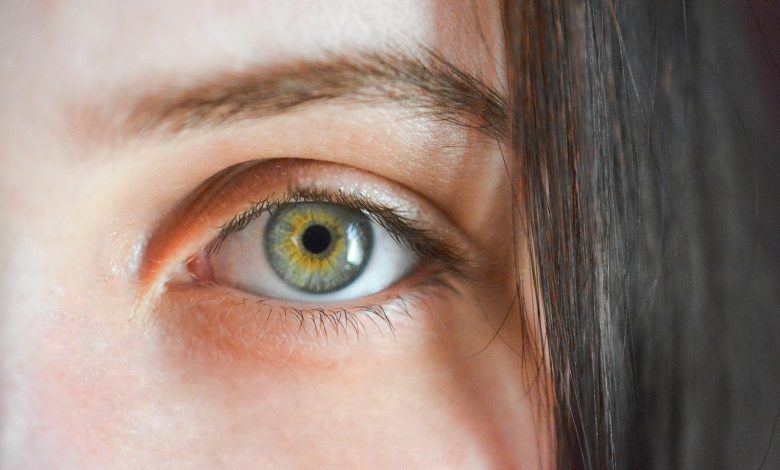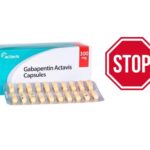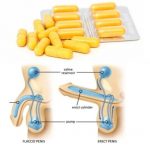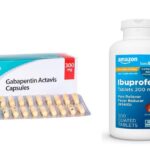What Are The Signs Of A Gabapentin Overdose?

A drug overdose is taking too much of a substance, whether it’s prescription, over-the-counter, legal, or illegal. Drug overdoses can be accidental or intentional. They occur when a person takes more than the medically recommended dose. However, some people may be more sensitive to certain medications, so the low (more dangerous) end of a drug may be toxic for them; a dose that is still within the range of acceptable medical use may be too much for their bodies to handle.
An overdose can lead to serious medical complications, including death. The severity of a drug overdose depends on the drug, the amount taken, and the physical and medical history of the person who overdosed.
Why is Gabapentin prescribed?
Gabapentin capsules, tablets, and oral solutions are used along with other medications to help control certain types of seizures in people who have epilepsy. Gabapentin capsules, tablets, and oral solutions are also used to relieve the pain of postherpetic neuralgia (PHN; the burning, stabbing pain or aches that may last for months or years after an attack of shingles). Gabapentin extended-release tablets (Horizant) are used to treat restless legs syndrome (RLS; a condition that causes discomfort in the legs and a strong urge to move the legs, especially at night and when sitting or lying down).
Gabapentin is in a class of medications called anticonvulsants. Gabapentin treats seizures by decreasing abnormal excitement in the brain. Gabapentin relieves the pain of PHN by changing the way the body senses pain. It is not known exactly how gabapentin works to treat restless legs syndrome.
How should Gabapentin be used?
Gabapentin comes as a capsule, a tablet, an extended-release (long-acting) tablet, and an oral solution (liquid) to take by mouth. Gabapentin capsules, tablets, and oral solution are usually taken with a full glass of water (8 ounces [240 milliliters]), with or without food, three times a day.
According to Mayo Clinic, the dosage of gabapentin that you will take depends on the strength of the medicine. Also, the number of doses you take each day, the time allowed between doses, and the length of time you take the medicine depend on the medical problem for which you are using the medicine.
| Gabapentin dosage chart | |||
| Indication | Age | Standard dosage | Maximum dosage |
| Partial seizures | |||
| 12 years and older | 300-600 mg three times per day | 3600 mg per day | |
| 5-11 years | 25-35 mg/kg (11.4-15.9 mg/lb) per day divided into three daily doses | 50 mg/kg (22.7 mg/lb) per day | |
| 3-4 years | 40 mg/kg (18.2 mg/lb) per day divided into three daily doses | 50 mg/kg (22.7 mg/lb) per day | |
| Postherpetic neuralgia | 18 years and older | 300 mg on day 1, 300 mg twice daily on day 2, then 300 mg three times daily on day 3; dosage may be further increased after day 3 to 600 mg three times per day | 1800 mg per day |
| Diabetic peripheral neuropathy | 18 years and older | 300-1200 mg three times per day (off-label) | 3600 mg per day |
| Fibromyalgia | 18 years and older | 600 mg twice daily and 1200 mg at bedtime (off-label) | 2400 mg per day |
| Alcohol dependence | 18 years and older | 300-600 mg three times per day (off-label) | 1800 mg per day |
These medications should be taken at evenly spaced times throughout the day and night; no more than 12 hours should pass between doses. The extended-release tablet (Horizant) is taken with food once daily at about 5 PM. Follow the directions on your prescription label carefully, and ask your doctor or pharmacist to explain any part you do not understand. Take gabapentin exactly as directed. Do not take more or less of it or take it more often than prescribed by your doctor.
Gabapentin extended-release tablets cannot be substituted for another type of gabapentin product. Be sure that you receive only the type of gabapentin that was prescribed by your doctor. Ask your pharmacist if you have any questions about the type of gabapentin you were given.
Swallow the extended-release tablets whole; do not cut, chew, or crush them.
If your doctor tells you to take one-half of a regular tablet as part of your dose, carefully split the tablet along the score mark. Use the other half-tablet as part of your next dose. Properly dispose of any half-tablets that you have not used within several days of breaking them.
If you are taking gabapentin to control seizures or PHN, your doctor will probably start you on a low dose of gabapentin and gradually increase your dose as needed to treat your condition. If you are taking gabapentin to treat PHN, tell your doctor if your symptoms do not improve during your treatment.
Can you overdose on gabapentin?
Yes, you can overdose on gabapentin. Although gabapentin is not addictive, many people intentionally overdose on gabapentin because of the sense of calm, euphoria, and high it produces at higher doses. One study found that of the 503 participants reporting illegal drug use, 15% reported using Gabapentin in addition to other drugs to get high in the previous 6 months.
Abusing gabapentin can cause instant death. For example, combining alcohol and gabapentin can worsen either or both effects. CNS depressants slow brain activity and cause drowsiness and dizziness. Combining alcohol and gabapentin, two CNS depressants can worsen these effects, making you feel extra drowsy and dizzy, causing impairment and accidents.
What are the Signs of a Gabapentin Overdose?
Taking too much gabapentin can lead to an overdose, which can be dangerous and even life-threatening. Here are some signs of a gabapentin overdose:
1. Dizziness and drowsiness: Taking too much gabapentin can cause excessive dizziness and drowsiness. This can make it difficult to perform normal daily activities and increase the risk of falls and other accidents.
2. Confusion: Overdosing on gabapentin can cause confusion, disorientation, and difficulty thinking clearly. This can be especially dangerous for older adults who may be more susceptible to cognitive impairment.
3. Difficulty breathing: In severe cases, a gabapentin overdose can lead to respiratory depression, which is characterized by shallow breathing or difficulty breathing. This can be life-threatening and requires immediate medical attention.
4. Loss of consciousness: In some cases, a gabapentin overdose can cause loss of consciousness or even coma. This is a medical emergency and requires immediate medical attention.
5. Seizures: While gabapentin is used to treat seizures, taking too much of the medication can actually increase the risk of seizures. If you experience seizures or convulsions after taking gabapentin, seek medical attention immediately.
Overdose of gabapentin is an emergency situation and needs immediate attention. The lethal dose of gabapentin ranges from 49 grams or more. If you or someone you know is experiencing any of these symptoms after taking gabapentin, it is important to seek medical attention immediately. An overdose of gabapentin can be dangerous and potentially life-threatening, so it is important to take the medication only as directed by a healthcare professional.
In case of overdose, call the poison control helpline at 1-800-222-1222. Information is also available online at https://www.poisonhelp.org/help. If the victim has collapsed, had a seizure, has trouble breathing, or can’t be awakened, immediately call emergency services at 911.





